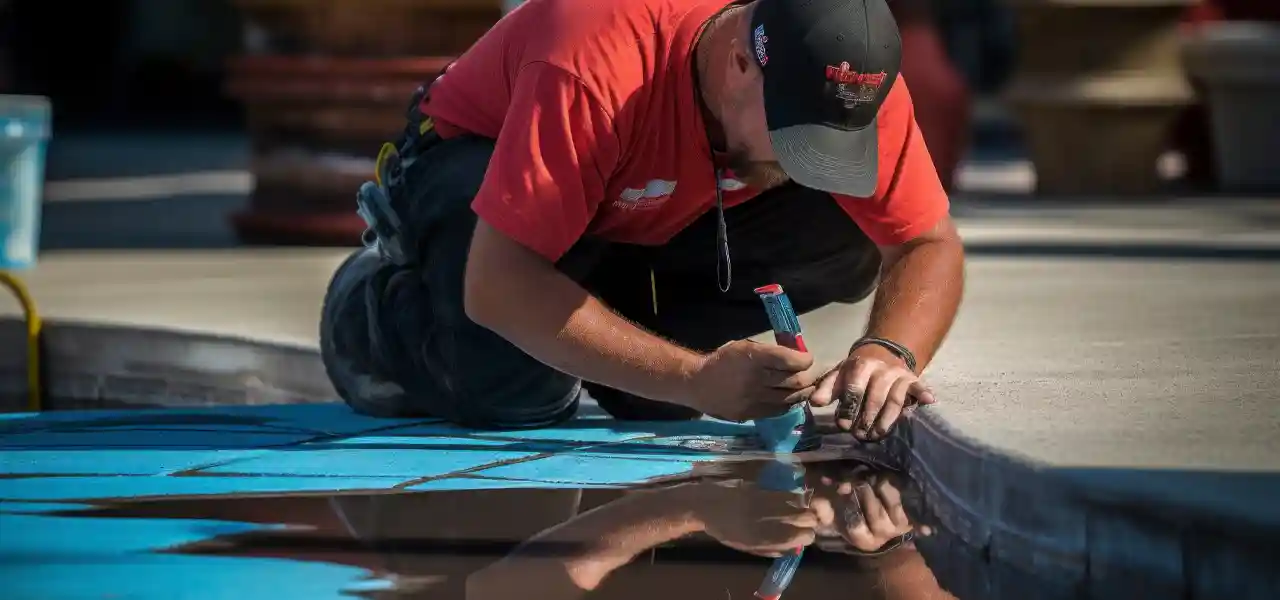FREE Standard Shipping On All Orders $100 or More!*

Pool Man's Toolbox: Lubricants & Sealants
In every pool man's toolbox or tool bucket, you'll find at least one lubricant, for greasing up pool equipment o-rings, and a sealant, for plugging up leaks on the pool or on the equipment. Today's tutorial focuses on some vital supplies to the pool man, or well-equipped pool owner: pool lubricants and sealants. They keep the gears turning and make quick spot repairs, to allow time to schedule a larger repair.
Swimming Pool Lubes
Silicone
Silicone lube is used for grey Jandy valves, the older type that has a grease cup on the side. It can also be used for push-pull valve piston o-rings, and for chlorinator lid o-rings. Silicone lubricant is not as slick as Teflon-based lube, but is very sticky. It stands up well to rushing water, chemicals and heat.
Teflon
Teflon lube is used on pool o-rings on the pump lid and filter tank. It's a more general purpose lubricant, which can really be used on anything that needs less friction. But don't use it in the pool, or inside the pool equipment, or you'll get a small oil slick across the pool, and a sticky residue on the tile. But use liberally on any rubber gaskets to improve the seal and protect it from drying out.
Kevlar
Now known as Aqua Shield, the marine industry is its largest customer. Green pool lube is used on brass fittings and metal nuts and bolts. It forms a weather tight barrier and makes heater drain plugs and other metal threads turn very easily.
Swimming Pool Sealants
Pool Sealants
Pool Putty is a two-part epoxy putty that can be used to seal up cracked skimmers or return fittings, or seal up air leaks on pump fittings, as a temporary repair. It can also be used for a quick tile repair, or to seal up cracks in the tile line, or leaks in the pool light conduit. Just mix equal parts with water, and it hardens underwater in about an hour, or for quick set-up, use Fast-Set pool putty.
Silicone can also be useful around a pool, to seal up air leaks on the suction side, or patch up a skimmer or pool light. It's can also be used to affix pool tile to a fiberglass pool. Underwater silicone is best to use, such as EZ Patch 22, a product we've used for years. Flow-able silicone, or Super Glue, can be used to fix small cracks in valve housings or mend broken plastic parts on a pool cleaner.
Thread Sealants
Drain plugs, air bleeders, pressure gauges - all threads should be wrapped in Teflon tape, (3x, in a clockwise direction), even if it has an o-ring. You can also use Liquid Teflon, which comes in small containers, or, in a pinch, you can use pipe dope, but that is used more on metal to metal threads.
For PVC fittings, I like to smear on a dab of Blue Goo, or Blue RTV silicone, into the threads, and then wrap the threads several times with Teflon tape over the silicone. This works well for pump and heater MTA's - the threaded PVC fitting threading into pumps and heaters.